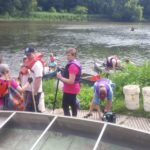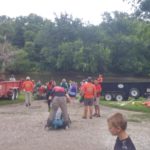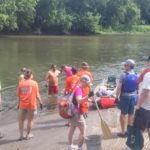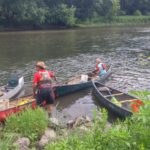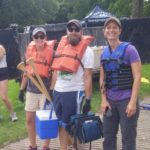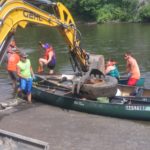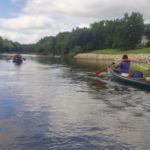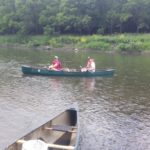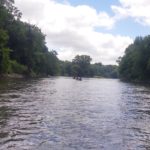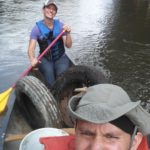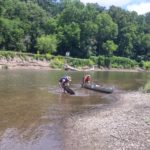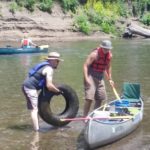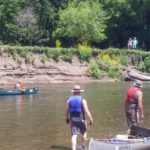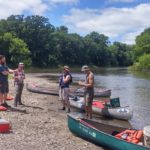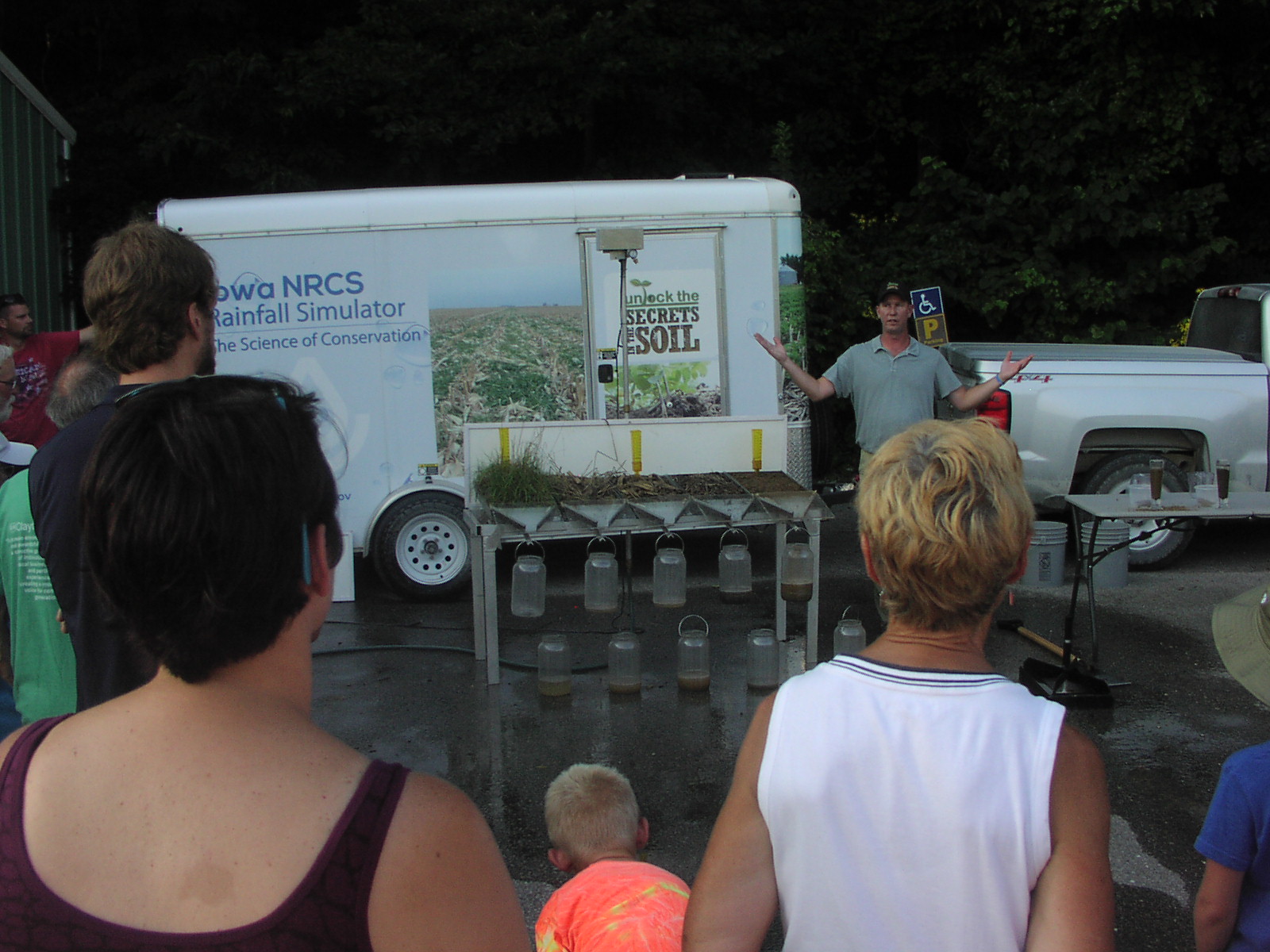We interview Jeff Kopaska, Iowa DNR, regarding the state of aquatic species in Iowa. This is part of our Water Scholars Book Club May pick, The Death and Life of the Great Lakes by Dan Egan.
Continue readingResearchers Looking into the Effects of Pharmaceuticals on Fish in Iowa’s Waterways
Written by Sarah Feehan
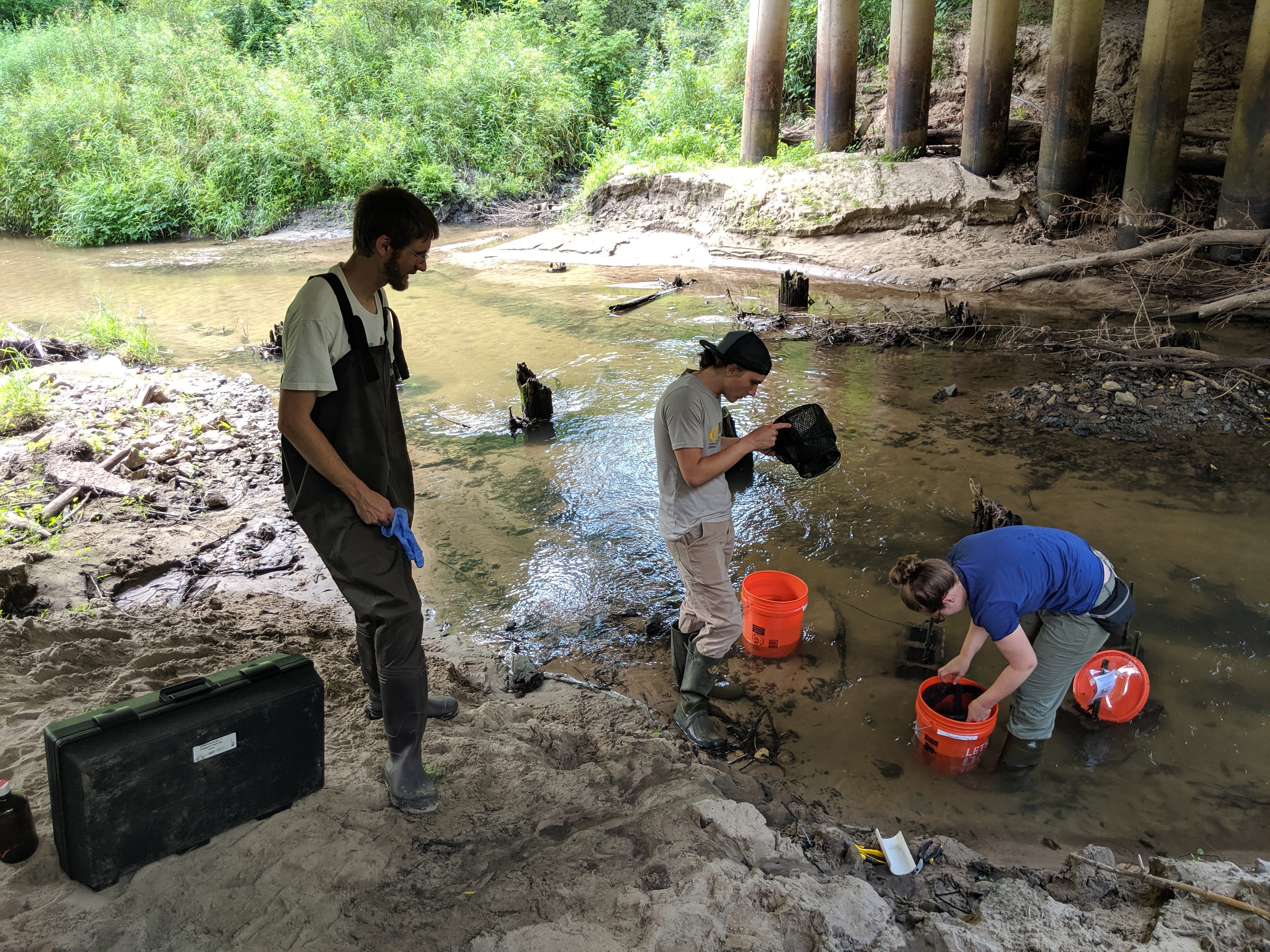
Lab-reared, native minnows have been living in fish cages placed in a stream for the last four days, and now a team of researchers collects them to study the impacts of water quality on aquatic organisms.
For nearly the past two years, these researchers have been measuring chemical concentrations in the same stream, and this caged fish experiment is one of the ways researchers are connecting chemical presence in the environment to possible biological effects.
Greg LeFevre, an assistant professor of environmental engineering and faculty research engineer for IIHR at the University of Iowa, studies water quality, wastewater, and toxic substances.
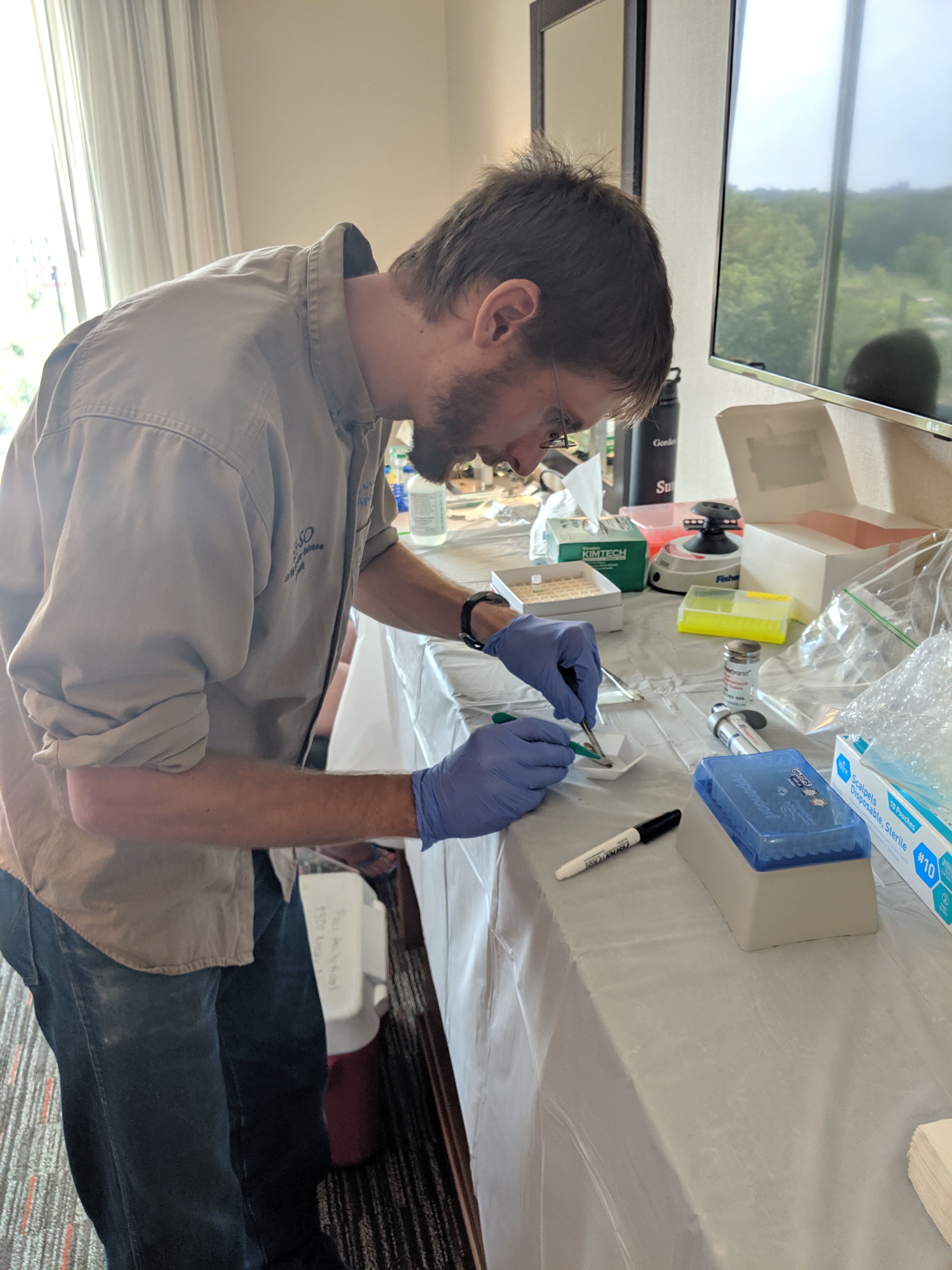
LeFevre, a principal investigator (PI) of the study, is researching what happens when pharmaceuticals enter our waterways. His research is funded through a National Competitive Grant under the USGS 104(g) Program. A goal of this program is to promote collaboration between the USGS and university scientists in research on significant national and regional water resources issues.
This working group consisted of representatives from the University of Iowa, the University of Wisconsin at Milwaukee, and the United States Geological Survey (USGS). There were PIs, graduate students, and USGS scientists.
“We have a number of different things we are working on both in the lab and in the field to try and answer the questions comprehensively through multiple fields of expertise,” LeFevre says. “And out of this one grant, because there are so many things coming out of this, we hope that this field site will be the locus for a bunch of other research.”
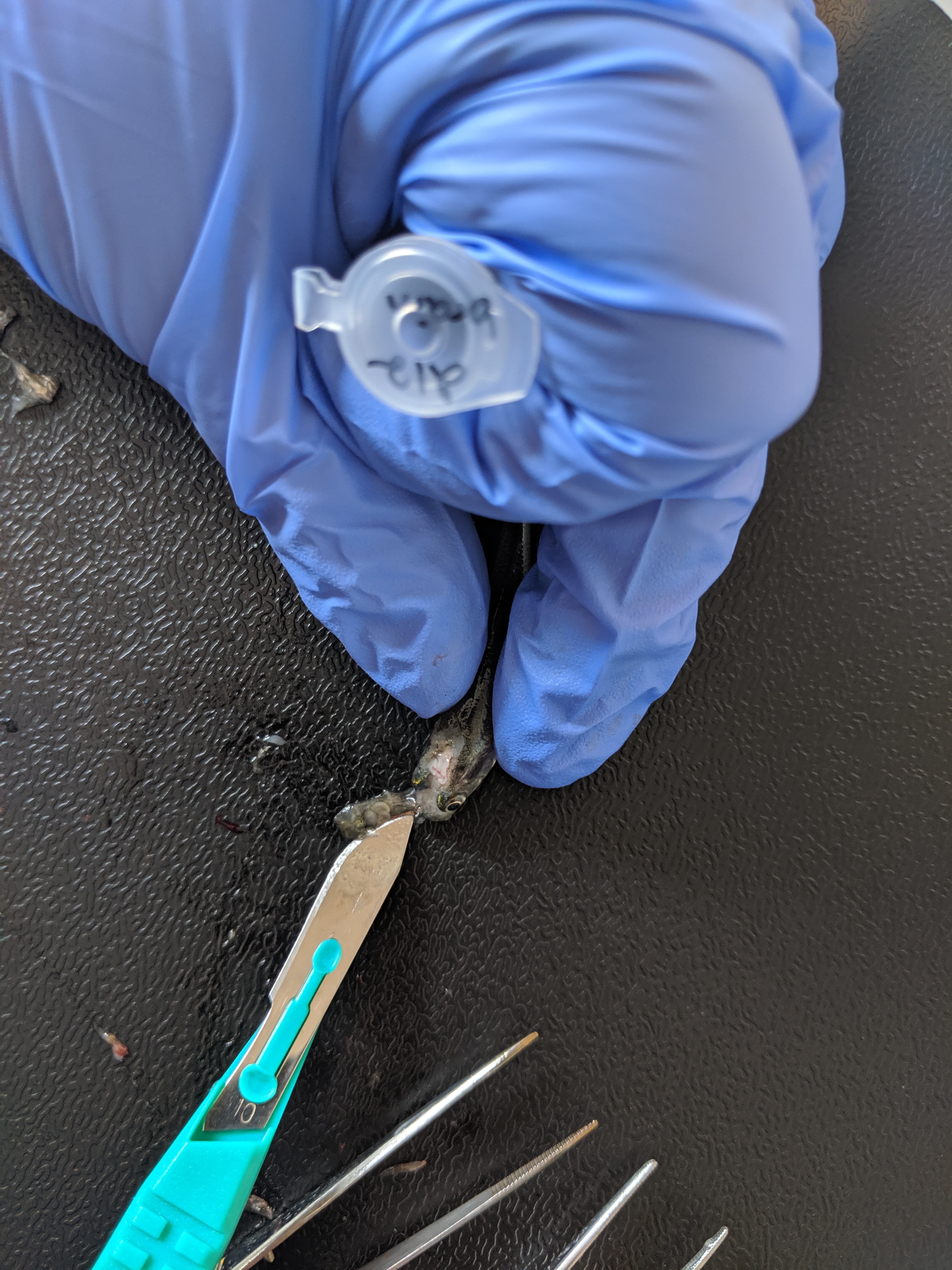
Wastewater-derived contaminants of emerging concerns (CEC) have demonstrated harmful effects to aquatic organisms. LeFevre believes that there is a critical need to understand how the changing complex mixture composition of CECs relates to biological effects. This understanding is critical in order to better protect ecosystem health in freshwater resources and inform stakeholder decisions.
“Everything that happens on the land is ultimately very connected to what goes on and into the water,” says LeFevre. “What we want to do is to develop some kind of understanding of the exposure to fish as well as some of the biological facts that are going on there.”
They hope to see the effects on fish throughout different areas of the stream. They will study a control group that permanently remains at the lab, a different group released in cages in the waterway after being brought up in the lab, and native fish who have spent their whole lives in the natural stream.
The waterway they are putting fish in and pulling fish from comes from an upstream wastewater treatment facility LeFevre describes as, “one of the best in the state.”
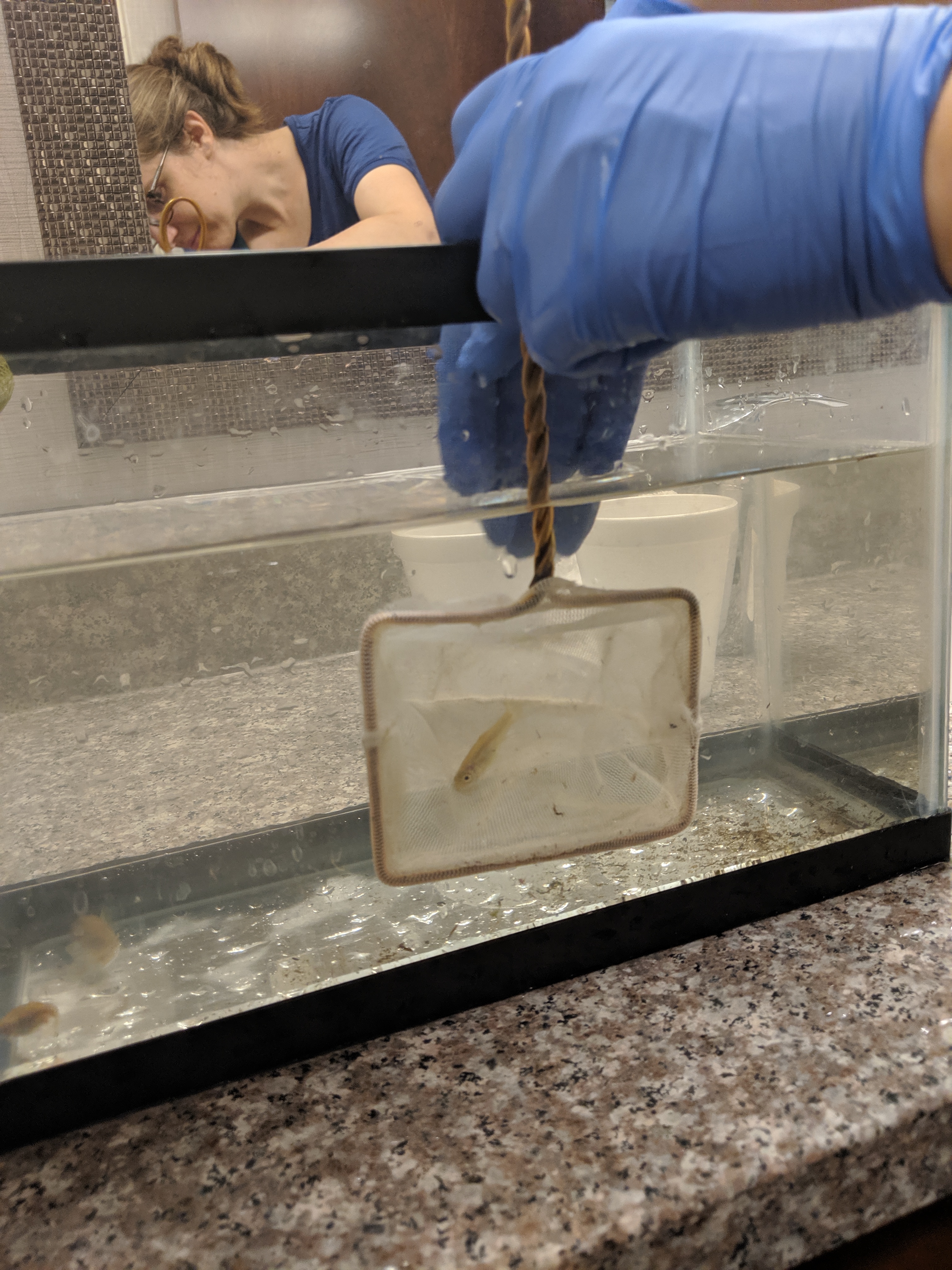
The North Liberty Wastewater Treatment Plant, upstream of the tested waterway, has a membrane bioreactor, zero E. coli that comes out of the plant, and biological phosphorus and nitrogen removal. All of which is far beyond the permit requirements.
Rebecca Klaper, professor at the School of Freshwater Sciences at the University of Wisconsin at Milwaukee, is a co-principal investigator on the study has also been a key collaborator to LeFevre’s research.
Regarding the data, Klaper explains, “The detection part is fantastic and the fact that we’ve gotten so much better at measuring these things is great. We might detect hundreds of chemicals in the water, but they might have no effect at all. So, the other part is trying to figure out if we really need to be concerned about them.”
“Today has been really exciting,” PhD candidate and research assistant at the University of Iowa Hui Zhi says. Zhi is one of four Iowa Water Center (IWC) Graduate Student Research Competition recipients for 2019.
“I think we were overprepared, which is great,” she says. “Having everything ready to go makes our work more efficient. And we also have so many people from our labs working together, making everything work very smoothly.”
Part of Zhi’s research through the IWC grant encompasses the sorption and biodegradation of pharmaceuticals in Iowa’s water. “It’s important we understand what’s in our drinking water, what’s in the treated wastewater, and what’s in the streams and rivers,” Zhi says.

Sarah Feehan is the communications specialist for the Iowa Water Center. She holds a BS in Journalism and Mass Communication with a minor in Political Science from Iowa State University. In fall of 2019, Feehan will begin acquiring her JD from Drake Law School.
Oxbows for Conservation and Nutrient Reduction in Iowa Floodplains
Post submitted by Clay L. Pierce, U.S. Geological Survey and Keith E. Schilling, Iowa Geological Survey
Formed when looping stream meanders are cut off through bank erosion or as the result of artificial stream straightening, oxbows are a common geomorphic feature in floodplains of Iowa’s agricultural landscape. Early accounts of habitat use by many fish species in prairie streams in Iowa and other Midwestern states describe habitats such as slow pools, submerged and emergent vegetation, side channels, and backwaters – habitats that are rare or nonexistent in those streams today. Oxbows are frequently among the few remaining slow or standing water habitats associated with many streams in these regions. Previous studies have established oxbows’ conservation value for Topeka shiners, federally listed as an endangered species, as well as their habitat value for numerous other native fish species. Studies conducted over the last two decades in Iowa consistently report greater prevalence and abundances of Topeka shiners in oxbows than in their associated streams. Ten other fish species of greatest conservation need have also been found in Iowa oxbows.
Widespread nutrient loss from agricultural areas in the U.S. Midwest is impacting aquatic ecosystems at both local and regional scales, including the Gulf of Mexico. Enhancing ecosystem services in floodplains offers opportunities to achieve nutrient reduction benefits in agricultural watersheds while minimizing loss of crop production areas. Preliminary studies in Iowa suggest that oxbows intercepting surface and tile water can reduce the amount of nitrate-nitrogen reaching streams by roughly one half.
Ongoing conservation studies, which will be presented in the oxbow track of the upcoming 2018 Iowa Water Conference, describe efforts to identify oxbow remnants for restoration, landscape and habitat characteristics of oxbows associated with presence of Topeka shiners, restoration programs in Iowa to increase the number and quality of oxbows for Topeka shiners, and efforts to evaluate the success of oxbow restorations. Also to be presented in the oxbow track of the 2018 Iowa Water Conference are three studies addressing water quality benefits of oxbows describing quantification of nutrient reduction benefits at individual oxbow sites and exploring the value and benefits of oxbow restorations within a watershed water quality planning context. A comparison of the value of oxbow restorations within the context of statewide nutrient reduction strategies in Iowa will also be discussed.
Clay Pierce is the Assistant Leader of the U.S. Geological Survey’s Iowa Cooperative Fish and Wildlife Research Unit at Iowa State University in Ames.
Keith Schilling is an Associate State Geologist and Research Engineer for the Iowa Geological Survey at the University of Iowa in Iowa City.
Project AWARE 2017

- Photo of Cedar River Coalition partners. Photo from @IWAReduceFloods, the Twitter account for the Iowa Watershed Approach.
Getting Down and Dirty for Cleaner Iowa Rivers
Last week we participated in cleaning up an Iowa river alongside the Iowa Department of Natural Resources and other water partners across the state for Project AWARE. This event is a week-long outdoor expedition to clean up a selected Iowa river. The purpose of this event is to increase awareness of and engagement with Iowa’s public waters. It gives Iowans the opportunity to make a difference in water no matter who they are and what they do in the state. Participants have the opportunity to do the cleanup for one day or stay and camp the whole week.
This year, the event was held on the Cedar River in Mitchell and Floyd Counties from July 10-14. Hundreds of water partners and community members across the state joined for this year’s cleanup. We attended the fourth day of the event. Our starting point was about 19 miles up river from Charles City, Iowa. Once we arrived in Charles City, we had the opportunity to go inner tubing down the Charles City Whitewater course to the campsite to receive a t-shirt and join in on evening fun at the site.
While we only attended one day of the trip, we found many canoe-loads of trash that does not belong in a river, such as barrels, tires, and even a couch!
See photos below for the highlights!
Farmers Connect Conservation to Water Quality at Big Spring
Elkader, IA. – On August 10th, fifty farmers from the Upper Roberts and Silver Creek Watersheds enjoyed an evening of family fun at the Big Spring Trout Hatchery along the Turkey River near Elkader. The Second Annual Landowner Appreciation Day allowed farmers and their families to follow the path of water that drains from their land to where it reemerges at Big Spring.
Continue reading